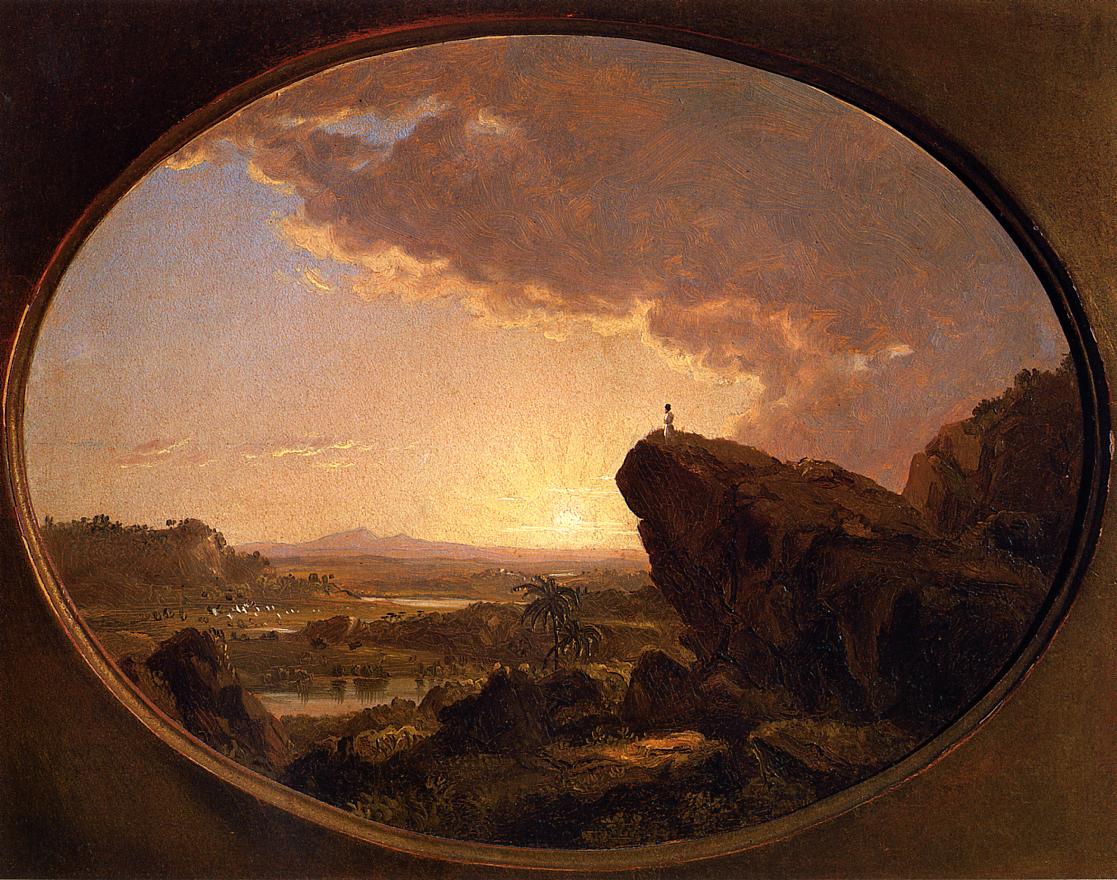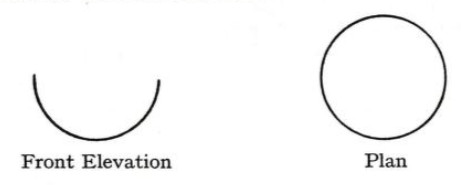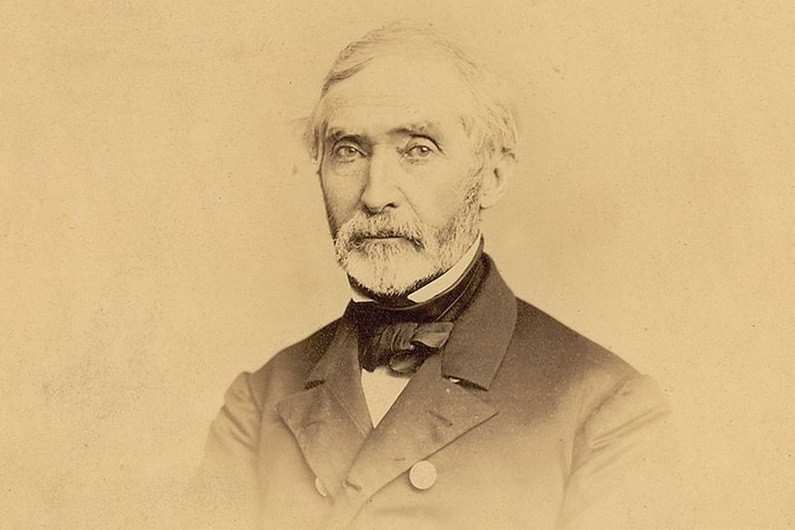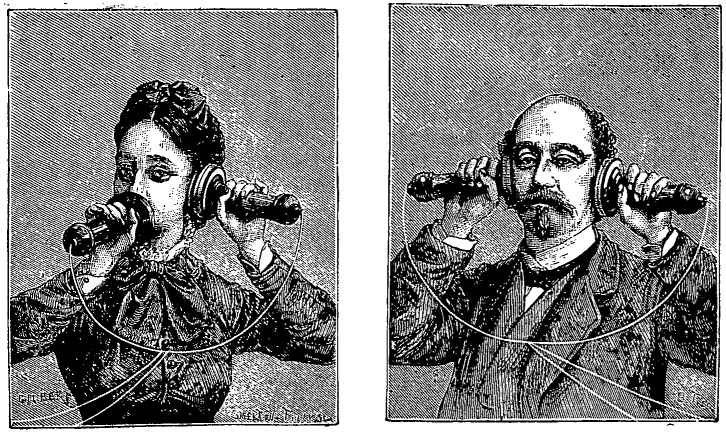
“Everything at a distance turns into poetry: distant mountains, distant people, distant events: all become Romantic.” — Novalis

“Everything at a distance turns into poetry: distant mountains, distant people, distant events: all become Romantic.” — Novalis
My neighbor has been stealing my newspaper. And when I confront him, he apologizes with a sarcastic, condescending air, as if to say that he’s surprised I can read at all. I find it impossible to forgive him, but then I learn that he’s about to lose his job. He’s an aging executive with a large family to support, and I’m sure that this misfortune will soften his scorn and make him more sincerely apologetic. I decide to forgive him when all this happens.
This seems odd — if I’m sure that he’ll lose his job and express real contrition for stealing the paper, why do I have wait for this to happen? Why can’t I forgive him now?
Another twist: I learn that I (and only I) can save his job. This would amount to doing him a large favor, so I feel justified in withholding my help until I’ve forgiven him. But is this fair? Can I refuse to help him until I get a sincere apology, knowing that this will happen only after he loses his job?
Xanthippe is angry that Socrates is late, but she knows that he’ll apologize when she starts making dinner. Knowing this, can’t she skip the dinner and just forgive him? “In other words,” asks Tennessee State University philosopher James Montmarquet, “knowing that he would apologize, may she not still forgive him — having elected, for quite good reasons, not to allow conditions apt for his apology even to take place?”
(James Montmarquet, “Planned Forgiveness,” American Philosophical Quarterly 44:3 [July 2007], 285-296.)
This does my head in — it’s a puzzle from the October 1958 issue of Eureka, the journal of the Cambridge University Mathematical Society:
“Below are shown the front elevation and plan of a mathematical figure. What is the side elevation?”

The terms (I believe) refer to multiview orthographic projection, the illustration technique used in architectural drawings: The front elevation is the view looking squarely at the “front” of the object, and the plan view looks down from above. What is the side view?
Scottish proverbs:
And “There’s naething sae gude on this side o’ time but it micht hae been better.”
(From Colin S.K. Walker, Scottish Proverbs, 2000.)
In 2021 Denmark’s Kunsten Museum of Modern Art engaged artist Jens Haaning to recreate two of his earlier works, An Average Austrian Year Income and An Average Danish Annual Income. Those pieces had presented framed piles of kroner and euro bills to represent the sums indicated in their titles, so the museum gave Haaning 532,549 kroner for the purpose.
Instead, he delivered two framed blank canvases. The title of this new work, he said, was Take the Money and Run.
“This is only a piece of art if I don’t return the money,” he told the New York Times. “I believe that I have created a good and relevant piece of artwork, which could be hung on the wall.”
It didn’t work out that way — on Sept. 18, a Copenhagen court ruled that he must return the money.
Haaning acknowledged that he hadn’t fulfilled the commission, but “I completed something else,” he argued. “You’re asked to show a 10- and a 12-year-old work, and suddenly you have a better concept.”
(Thanks, Sharon.)
In a certain fair island, for commerce renown’d,
Whose fleets sailed in every sea,
A set of fanatics, men say, there was found,
Who set up an island and worship around,
And called it by name Elessdé.
Many heads had the monster, and tails not a few,
Of divers rare metals was he;
And temples they built him right goodly to view,
Where oft they would meet, and, like idolists true,
Pay their vows to the great Elessdé.
Moreover, at times would their frenzy attain
(‘Twas nought less) to so high a degree,
That his soul-blinded votaries did not complain,
But e’en laid down their lives his false favour to gain–
So great was thy power, Elessdé.
As for morals, this somewhat unscrupulous race
Were lax enough, ‘twixt you and me;
Men would poison their friends with professional grace,
And of the fell deed leave behind ne’er a trace,
For the sake of the fiend, Elessdé.
Then forgery flourished, and rampant and rife
Was each form of diablerie;
While the midnight assassin, with mallet and knife,
Would steal on his victim and rob him of life,
And all for thy love, Elessdé.
There were giants of crime on the earth in that day,
The like of which we may not see:
Although, peradventure, some sceptic will say
There be those even now who acknowledge the sway
Of the god of the world — £ s. d.
(That is, pounds, shillings, and pence, the pre-decimal currencies of the British Isles.)
From William T. Dobson, Poetical Ingenuities and Eccentricities, 1882.

More than 500 of the commanders in the American Civil War were West Point graduates, and all but a handful of these studied under the same military theorist, Dennis Hart Mahan, whose course “Engineering and the Science of War” applied the lesson of Napoleon’s campaigns — that the key to success was rapid maneuver to concentrate one’s forces at a critical point of weakness in the enemy position. (Of Grant’s encirclement of Vicksburg, Mahan said, “European warfare can produce nothing equal to it since the 1st Napoleon.”)
In addition to Grant, Mahan’s pupils included William Tecumseh Sherman, George Meade, George B. McClellan, Henry Halleck, George Henry Thomas, John Sedgwick, Ambrose Burnside, Joseph Hooker, and Philip Sheridan among the Union forces and Robert E. Lee, Jefferson Davis, Stonewall Jackson, James Longstreet, Albert Sidney Johnston, P.G.T. Beauregard, John Bell Hood, Richard S. Ewell, J.E.B. Stewart, and William J. Hardee in the Confederacy. Historian James Robertson called him “the guru of the generals.”
(James Robertson, The Untold Civil War, 2011.)

The “Swiss family Robinson” is not named Robinson. The title of Johann David Wyss’s 1812 novel shows the enormous influence of Daniel Defoe’s Robinson Crusoe even a century after its publication; the 18th century was filled with “Robinsonades” in German, Dutch, French, Danish, Swiss, Swedish, and Italian:
Teutsche Robinson, 1722
Americanische Robinson, 1724
Nordische Robinson, 1741
Hollandsche Robinson, 1743
Dänische Robinson, 1750
Walchersche Robinson, 1752
Maldivschen Philosophen Robine, 1753
Oude en Jongen Robinson, 1753
Isländische Robinson, 1755
Hartz-Robinson, 1755
Robinson vom Berge Libonon, 1755
Haagsche Robinson, 1758
Robertson [sic] aux terres australes, 1766
Steyerische Robinson, 1791
Böhmische Robinson, 1796
Wyss’s marooned Swiss family is nameless.
(Gary Dexter, Why Not Catch-21?, 2007.)

A Canadian notice to new telephone users, 1896:
To Listen: Place the telephone fairly against the ear, with an upward motion, so that the lower extremity or lobe of the ear is gathered in, into the cavity of the telephone; in this position it will be found to fit snugly and comfortably — the lobe of the ear acting as a cushion and at the same time closing out all ulterior sounds, thus enabling the voice to be heard with clearness and precision.
One California instruction read, “Speak directly into the mouthpiece keeping mustache out of the opening.”
With no social conventions to follow, users had to be taught propriety. AT&T promoted a “Telephone Pledge” that read, “I believe in the Golden Rule and will try to be Courteous and Considerate over the Telephone as if Face to Face.” The winner of a 1910 Bell essay contest wrote, “Would you rush into an office or up to the door of a residence and blurt out ‘Hello! Hello! Who am I talking to?’ No, one should open conversations with phrases such as ‘Mr. Wood, of Curtis and Sons, wishes to talk with Mr. White …’ without any unnecessary and undignified ‘Hello’s.'”
In America Calling (1992), Claude S. Fischer notes, “Companies cut off service to abusers and obtained legislation that fined or even jailed profane customers.”
metrophobia
n. an irrational fear of poetry